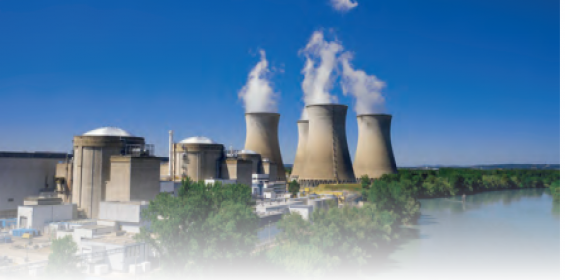Composite repair solution extends pipe life for EDF
Published: 27 August, 2021
The decision by power generation company EDF to repair, rather than replace, leaking pipework at its nuclear power plant in Bugey has proved hugely beneficial both practically and financially. Maintenance engineers used Henkel’s Loctite Composite Pipe Repair System to restore the integrity of 170m of freshwater pipes, a process that was undertaken without the need to stop production and at a cost that was 35% less than the replacement value. PWE reports.
The Loctite Composite Pipe Repair System is a sustainable solution that has already proven its cost-effectiveness across many industrial sectors including energy and petrochemical production, paper converting, water treatment and chemical processing. And in common with other users, it has enabled EDF to extend the service life of its damaged steel pipes by up to 20 years with a repair that is certified to the global quality standard, ISO 24817.
Located around 75km from the Swiss border, the EDF plant occupies 100 hectares and currently houses four, pressurised water reactors. A network of pipes supplying raw water to the demineralisation station date from the plant’s original construction and, after 40 years of service, some sections required multiple and complex repairs.
The renewal of the DN 168 and DN508 sections would have required a complete bypass system to be installed to ensure the continuity of the cooling process. So, engineers from EDF’s valves and boilers department sought a repair solution that would not only avoid the high cost of pipe replacement but also the expense and time involved in installing the temporary by-pass.
EDF chose the Loctite Composite Pipe Repair System because it is an all-in-one solution designed to repair damaged or corroded elements where high impact resistance and protection against corrosion and external attack are required. All system elements, from the effectiveness of the product and process to the way the system is applied and managed in the field, are covered by the certification process.
Central to the system is a resin-based composite material reinforced with fibres. It is similar to materials developed by Henkel under its Loctite brand that are successfully serving manufacturers of rotor blades for wind power generation or lightweight components for the automotive industry. Applied at ambient temperature, it is suitable for repairing punctures and other wall defects and, depending on the type of fault, the process can generally be carried out under pressure to eliminate downtime.
As well as metal pipes, the system is also suitable for repairing conduits, tanks and components with complex geometries such as bends, tees, reducers and flanges.
The process
Every repair is different but, typically, the first step in the process is to clean and sandblast the surface of the damaged area. As this treatment exposes the site to flash rust, the corrosion inhibitor Loctite SF 7515 is applied to provide immediate, temporary protection. As appropriate, the original outer pipe diameters are then restored by filling the cavities with Loctite EA 3478, a proven ferro-silicone filled epoxy compound that provides outstanding compression strength. This product was specifically developed for renewing surfaces subject to compression, thrust, impact and harsh environments.
The pipe is then wrapped with high-strength, glass carbon-fibre tape, Loctite PC 5085, that has been impregnated with the temperatureresistant, two-part epoxy resin Loctite PC 7210; this product is designed for bonding steel substrates and exhibits exceptionally high adhesion. The final step is to seal the repaired section with the sprayable ceramic topcoat, Loctite PC 7255, a two-part epoxy that is also WRAS approved. The resultant composite repair effectively reinforces steel pipes for continued duty under high pressure and thermal cycling while increasing their resistance to internal and external attack.
As part of the solution package Henkel provided EDF with calculations of the proposed repair designs. These differ from project to project depending on a range of parameters such as the forces acting on the pipeline, temperature, pressure and extent of damage. Specially developed software then determined how the repair should be executed. This too is covered by ISO 24817 certification so EDF could be certain of the safety and efficiency of the process.
https://www.linkedin.com/company/henkel/
https://www.facebook.com/henkel







